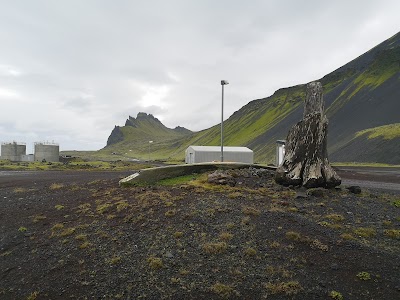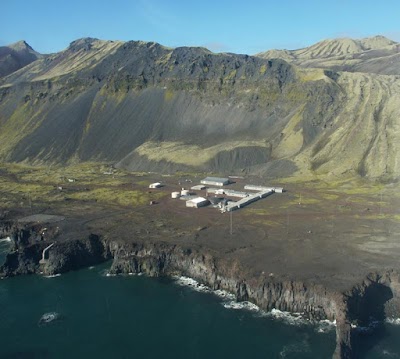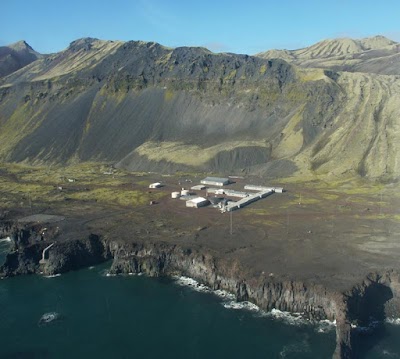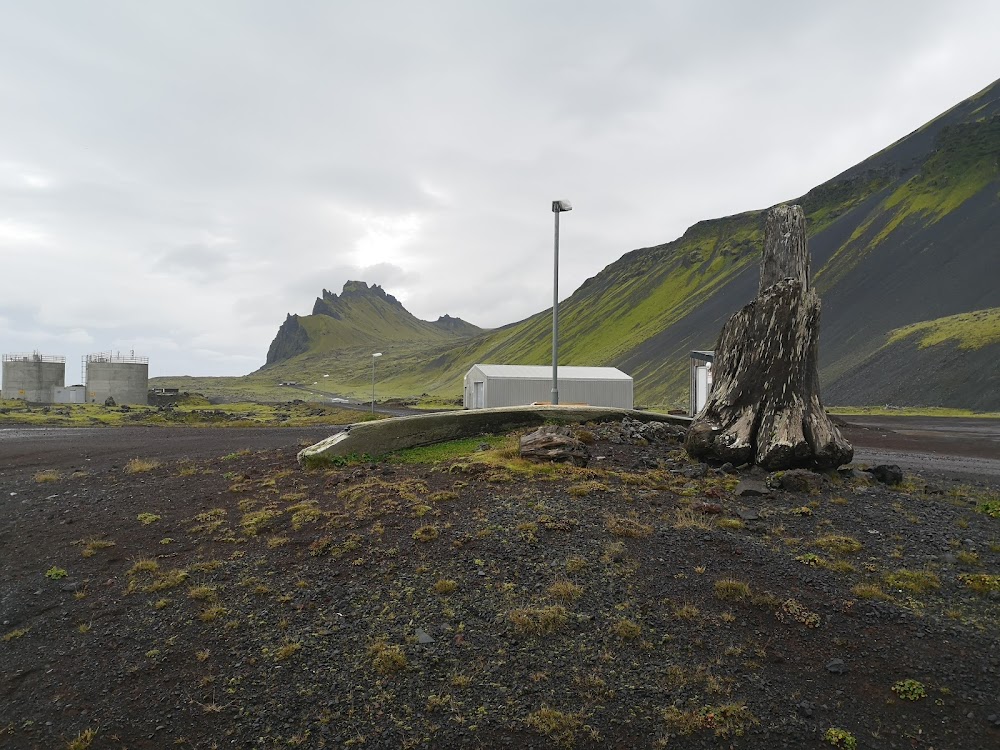Jan Mayen Weather Station (Jan Mayen Værstasjon)
Related Places
Overview
Jan Mayen Weather Station: A Unique Arctic Adventure
Nestled on the remote and rugged island of Jan Mayen in Norway, the Jan Mayen Weather Station is a captivating destination for adventurous travelers drawn to meteorology, history, and pristine landscapes. Located approximately 600 kilometers northeast of Iceland in the Arctic Ocean, this weather station serves as one of Norway's most vital meteorological outposts, fulfilling both scientific and strategic roles.
The island itself boasts a rich history, having hosted whaling stations and military outposts throughout the years. Established in 1921 by the Norwegian Meteorological Institute, the weather station quickly gained recognition for its strategic and scientific importance. Over the decades, it has seen numerous upgrades and renovations to enhance its capabilities and meet modern standards. During World War II, the station faced temporary evacuation due to threats from German occupation, underscoring its critical position in the North Atlantic during tumultuous times.
Today, the Jan Mayen Weather Station operates year-round, providing essential meteorological data vital for weather forecasting and climate research. Its remote location offers an unparalleled opportunity to study undisturbed Arctic weather patterns, adding invaluable insights to our understanding of the planet's climate.
One of the station's most striking features is its dramatic backdrop—Mount Beerenberg, the northernmost active volcano on Earth. Towering at 2,277 meters, this majestic mountain often appears cloaked in mist and clouds, creating an otherworldly atmosphere on the island. The stark contrast between the mountain, its surrounding glaciers, and the barren rocky terrain contributes to the breathtaking beauty of Jan Mayen.
A Remote Haven
Jan Mayen is renowned for its isolation, making it one of the most secluded places on the planet. The weather station acts as the main hub of activity, with no permanent residents aside from the stationed staff. This pristine environment serves as a sanctuary for various wildlife species, particularly seabirds. The remoteness of the island also means that all supplies must be transported by sea or air, requiring the station to be self-sufficient.
For intrepid travelers, visiting Jan Mayen and its weather station offers a rare glimpse into the raw power of nature and the operations of a remote Arctic outpost. However, journeying here is no simple feat; obtaining permission from Norwegian authorities is essential, and visits are typically arranged through specialized tours designed for explorers and researchers. This exclusivity makes any trip to Jan Mayen a memorable adventure.
In addition to the weather station, Jan Mayen boasts other attractions, including remnants of historical stations, stunning panoramic views, and the chance to encounter rare Arctic flora and fauna. For the more adventurous visitor, hiking up Mount Beerenberg offers breathtaking vistas over the Arctic Ocean and surrounding ice fields.
A Unique Experience Awaits
In summary, the Jan Mayen Weather Station stands as a beacon of scientific endeavor situated in one of the world’s most remote and beautiful locations. Its rich history—from its establishment in the early 20th century to its pivotal role during World War II and its ongoing contributions to meteorology—highlights its significance in the scientific community. For those willing to embark on this extraordinary journey, Jan Mayen offers a unique and enriching experience, blending historical intrigue, scientific importance, and the awe-inspiring beauty of the Arctic. A visit here not only reveals the challenges faced in extreme conditions but also showcases the dedication of those tirelessly working to enhance our understanding of Earth’s climate.







